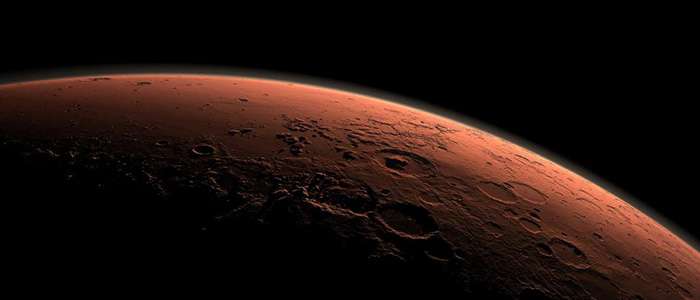Future issues perchlorate poses for colonizing Mars

There's a problem on the surface of Mars, and its name is perchlorate.
If humans want to colonize the Red Planet one day, as NASA hopes to do sometime in the next century, this naturally occurring thyroid disruptor and additive of rocket fuel may pose problems for human health.
That's why two Texas Tech University researchers were asked last December to NASA's Ames Research Center in Moffett Field, California, to discuss the health problems perchlorate poses and perhaps use the compound to human advantage.
Texas Tech researchers have probed the problems with perchlorate for years, said Todd Anderson, one of the presenters at the December discussion and the interim director of The Institute of Environmental and Human Health. In fact, after finding it in store-bought and human breast milk and studying its environmental effects at a decommissioned ammunition Superfund site, he and other Texas Tech colleagues literally contributed to writing the book on it and titled their findings "Perchlorate Ecotoxicology."
"A lot of perchlorate research has been done at Texas Tech during the last 15 years, and a lot of it has looked at the fate and effects of perchlorate," Anderson said. "It's an oxidizer in rocket fuel, but it also occurs naturally particularly in arid environments. Years ago, people found it in Levelland, Texas, in a water storage tank. So, we started doing research and getting funding to do a bunch of work on natural perchlorate. Not a lot was known about it at that time."
Anderson and others found that perchlorate occurred naturally in the atmosphere when ozone reacts with chlorine. It floats back down to Earth where bacteria break it down.
However, in dry areas like the South Plains of Texas, the helpful bacteria that break perchlorate down don't exist because of the arid conditions, said Andrew Jackson, associate chairman of the Department of Civil, Environmental and Construction Engineering who also participated in the NASA event.

Jackson explained that the compound gathers on the ground year after year in arid places such as West Texas. Agricultural irrigation flushed the surplus down through the soil into the groundwater where it can create problems for humans who use groundwater for drinking. The chemical has turned up in areas such as Antarctica and California's Death Valley.
On Earth, high concentrations can cause problems, but by and large, the compound isn't abundant. The Red Planet has higher concentrations, comparatively speaking, said Jacob Cohen, chief scientist at NASA Ames Research Center. Data from the Phoenix have determined the concentration of perchlorate at two sites on Mars to be about a half to 1 percent. That's up to 10,000 times more than what's found on Earth.
NASA officials invited Anderson for his expertise on the toxicology of perchlorates and Jackson for his expertise in origin and production of perchlorates on Earth.
"What is most exciting about Mars is that the more we study the planet the more we find out that the planet may have been able to support life in the past and may be able to support life in the future," Cohen said. "By studying Mars and our other neighbor, Venus, we may learn more about our planet and its origin. While there may be risks with space exploration, or any exploration to novel destinations on Earth, the need to explore is an important trait that we exhibit and one that is important for our survival."
Discovering perchlorate on the Red Planet came as a surprise to scientists, Jackson said. When NASA scientists began finding it, they contacted Jackson to find out what this stuff is and what do we know about it.
"When NASA was putting up this workshop, the idea was to connect what's known about perchlorate on Earth with researchers who want to work on Mars and what they may encounter," he said. "Todd gave the toxicity story about perchlorate, and I gave the Earth story.

"But honestly, with all the other health risks to astronauts, perchlorate's not going to be the big thing they're worried about."
Scientists also are stumped as to how perchlorate got there in the first place. Jackson said they're not sure if it formed billions of years ago when Mars had an atmosphere, or if it's a surface reaction occurring all the time caused by the radiation from the sun that makes it to the Martian landscape.
Despite the compound causing health problems, its presence could also be useful, Jackson said. Since Mars seems one of the most likely places in our solar system to house life besides Earth, perchlorate could play a role in sustaining some bacteria-like life forms. The chemical reduces the freezing point of water allowing liquid water to exist on the otherwise freezing cold planet. Earthbound bacteria also can use the chemical in place of oxygen to help with metabolism, he said, and perhaps other life forms have adapted the same mechanisms.
"It's a fascinating question as to how it got there," he said. "If it wasn't for biology on Earth, we might be perchlorate-dominated. If we didn't have bacteria, perchlorate wouldn't go away."
Anderson said he was honored to be one of the fewer than 20 presentations given at the workshop.
"When people look back at the history and ask how we got there (Mars), there will be that December 2014 workshop where two Texas Tech scientists were invited to present," he said.
Provided by Texas Tech University



















